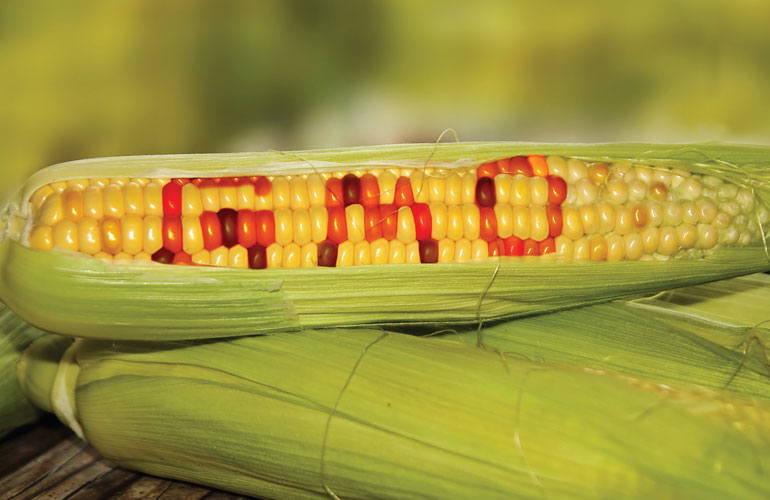When you think of genetically modified organisms, do you think of radioactive spiders? Some crazy scientist in a lab laughing over their chemicals? Or something that would make you super human?
Well, you wouldn’t be blamed for thinking that as that is what media has often led us to believe.
But what if I told you that humans have been genetically modifying crops and animals for at least 12,000 years? These modifications definitely weren’t done in a lab. A good example of this ancient Genetically Modified Organism (GMO) is corn. The golden sweetcorn, as we know it today, is pretty much unrecognisable from its original form; a thin green husk known as Teosintes which would barely feed a mouse let alone a full-grown human (give it a google, I’ll wait).
Now humans have been eating corn for years and no-one with super powers has emerged yet, unless marvel films are really documentaries? But how were ancient grains, such as corn, modified way back in the day? And how do you actually genetically modify an organism? I hear you cry. Well you’ve come to the right place.
The genetic modification, that happened thousands of years ago to give us large corn on the cobs and orange carrots (and yes, carrots were originally purple not orange), is similar to the genetic modification that happens today, but it occurred at a slower rate. The individuals of a species were bred based on the characteristics that the farmers wanted. You want a carrot that is orange not purple? You take the carrots that are the most orange and breed them together over and over again until you get the effect you want. But it takes generations upon generations to get a substantial effect and to ensure it is securely written into the genetic code. Nowadays, the process is essentially the same but it is sped up by inserting the DNA for the required characteristic directly into the genome instead of waiting for the animal or plant to breed.
But why bother genetically modifying a species? In doing so, we can dramatically change the features of a species to benefit our health just by altering a tiny piece of DNA. For example, insect resistant corn has been made, meaning less insecticides need to be used, thus, reducing the chemicals that are entering our food and thus our bodies. Crops, such as soybean, have been made herbicide resistant meaning surrounding weeds can be killed but the crop itself will live on. This is often used as an argument against GMO . If the species got loose, it would be able to out compete native plants and would be difficult to get rid of. However, the chance of a species escaping is slim as scientists have to be rigorous with the housing and disposal of such species, you couldn’t just put it in your compost bin or grow it in your back yard.
Not only can GMO reduce the amount of chemicals we are using in food processing but nutritional benefits can be added to crops. Golden rice is rice, as you probably guessed, but it has added vitamin A. The addition of vitamin A is to reduce vitamin A deficiencies in at risk groups such as in Indonesia and the Philippines. Why vitamin A though? Well, vitamin A deficiencies have been said to be the most important issue in terms of global health as it is easily treatable, but many groups just simply do not have access to food that provide enough of it. That’s where golden rice comes in. The rice is as effective at providing vitamin A as is eating eggs or drinking milk, meaning that there has been a reduction in blindness and death just by eating rice. The reason for golden rice’s success is that many people at risk of vitamin A deficiencies have a diet based mainly on rice, making it an obvious choice to fortify.
Another benefit of GMO crops is a reduction in the use of land. This is of increasing importance with global populations set to reach 9.8 billion by 2050; we do not have enough space for both the people themselves and the land we need to feed them. GMO crops, however, can reduce the amount of land needed and increase productivity. They have already increased land productivity by 22% and reduced the amount of land needed by 51 million acres and that’s before they have been even legalised everywhere.
So are GMO crops good or bad? Well, many benefits can be added to the plant resulting in enhanced resistance to pests, reduced land use, or even enhanced nutritional benefits. And the organism has to go through so many levels of testing to be put on to the market so that nothing that reaches your plate will be harmful, so you’re not going to turn into a superhuman any time soon, sorry about that. Humans have been modifying their crops for thousands of years but before it was at a snail’s pace. So, GMO is simply providing us with the ability to speed things up so that we can match food production to the growth of the population.
image source: https://www.farmingmagazine.com/dairy/forages/gmo-crops/

